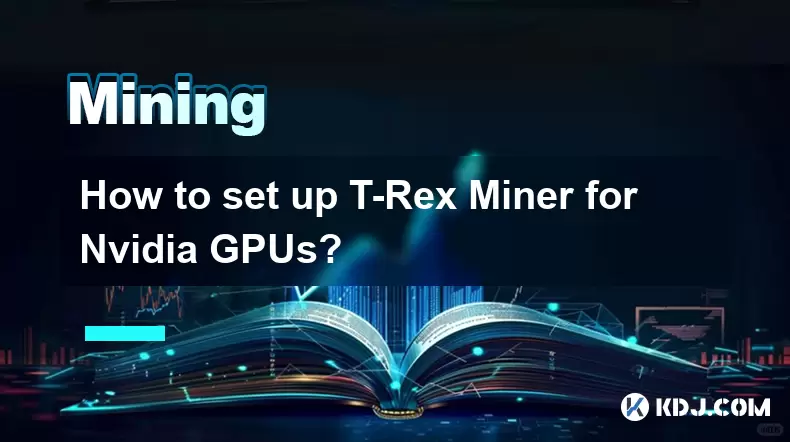-
 Bitcoin
Bitcoin $117700
-1.00% -
 Ethereum
Ethereum $4458
-3.91% -
 XRP
XRP $3.119
0.14% -
 Tether USDt
Tether USDt $1.001
-0.02% -
 BNB
BNB $836.6
-1.56% -
 Solana
Solana $189.5
-3.90% -
 USDC
USDC $0.9998
-0.02% -
 Dogecoin
Dogecoin $0.2335
1.29% -
 Cardano
Cardano $0.9642
1.51% -
 TRON
TRON $0.3539
-1.19% -
 Hyperliquid
Hyperliquid $47.41
-1.84% -
 Chainlink
Chainlink $21.92
-3.28% -
 Stellar
Stellar $0.4286
-0.23% -
 Sui
Sui $3.724
-3.29% -
 Bitcoin Cash
Bitcoin Cash $594.8
-0.78% -
 Ethena USDe
Ethena USDe $1.001
0.04% -
 Hedera
Hedera $0.2501
-2.06% -
 Avalanche
Avalanche $23.96
-4.87% -
 Litecoin
Litecoin $119.0
-2.32% -
 Toncoin
Toncoin $3.473
0.82% -
 UNUS SED LEO
UNUS SED LEO $9.596
0.17% -
 Shiba Inu
Shiba Inu $0.00001301
-0.39% -
 Uniswap
Uniswap $11.03
-0.25% -
 Polkadot
Polkadot $3.935
-2.62% -
 Dai
Dai $1.000
0.01% -
 Bitget Token
Bitget Token $4.564
-1.76% -
 Cronos
Cronos $0.1512
-4.11% -
 Ethena
Ethena $0.7306
-1.09% -
 Pepe
Pepe $0.00001087
-2.68% -
 Aave
Aave $300.2
-4.00%
Dogecoin Mining Tutorial
Understanding Dogecoin mining involves validating and adding new blocks to the blockchain through computing complex mathematical problems, rewarding successful miners with Dogecoin.
Jan 09, 2025 at 10:39 pm

Key Points of Dogecoin Mining Tutorial
- Understanding Dogecoin Mining
- Setting Up a Dogecoin Mining Rig
- Joining a Mining Pool
- Monitoring and Managing the Mining Process
- Troubleshooting Common Mining Issues
- Frequently Asked Questions on Dogecoin Mining
Dogecoin Mining Tutorial: A Comprehensive Guide
Step 1: Understanding Dogecoin Mining
Dogecoin mining is the process of validating and adding new blocks to the Dogecoin blockchain. Miners use specialized hardware to solve complex mathematical problems, and the first miner to find a solution receives a reward in the form of Dogecoin.
Step 2: Setting Up a Dogecoin Mining Rig
To set up a Dogecoin mining rig, you will need:
- A powerful graphics card (GPU) or an application-specific integrated circuit (ASIC) miner
- A motherboard and CPU
- A power supply unit
- RAM
- A hard drive
- A mining software
Step 3: Joining a Mining Pool
Joining a mining pool increases your chances of finding blocks and receiving rewards. Pools combine the computing power of multiple miners and distribute rewards proportionally based on each miner's contribution.
Step 4: Monitoring and Managing the Mining Process
Once your mining rig is up and running, it's important to monitor its performance and make adjustments as needed. Use mining software to monitor hashrate, temperature, and other metrics. Regularly update your mining software and drivers to ensure optimal performance.
Step 5: Troubleshooting Common Mining Issues
Common mining issues include hardware malfunctions, software bugs, and network connectivity problems. If you encounter any issues, check your hardware, update your software, adjust your mining settings, or troubleshoot network connectivity.
Frequently Asked Questions on Dogecoin Mining
- What is the current difficulty of Dogecoin mining?
The Dogecoin mining difficulty adjusts dynamically based on the hashrate of the network. Check websites like CoinWarz or WhatToMine for the current difficulty. - Is Dogecoin mining profitable?
The profitability of Dogecoin mining varies based on factors such as mining difficulty, electricity costs, and Dogecoin price. Use calculators like NiceHash or CryptoCompare to estimate profitability. - How do I choose a Dogecoin mining pool?
Consider factors such as pool fee, server uptime, minimum payout threshold, and reputation. Research different pools and join one that meets your requirements. - Can I mine Dogecoin with a CPU?
Mining Dogecoin with a CPU is generally not profitable due to its low hashrate. ASIC miners and GPUs are more suitable for mining. - Is Dogecoin mining legal?
Dogecoin mining is legal in most countries. However, check the laws and regulations specific to your jurisdiction to ensure compliance.
Disclaimer:info@kdj.com
The information provided is not trading advice. kdj.com does not assume any responsibility for any investments made based on the information provided in this article. Cryptocurrencies are highly volatile and it is highly recommended that you invest with caution after thorough research!
If you believe that the content used on this website infringes your copyright, please contact us immediately (info@kdj.com) and we will delete it promptly.
- Kazakhstan's Crypto Leap: Bitcoin ETF and Central Asia's Digital Finance Future
- 2025-08-13 12:45:19
- BlockDAG Presale Blazes Past $371M: Fundraising Frenzy Fuels Crypto Sensation
- 2025-08-13 13:05:21
- Meme Coins: Chasing the 2025 Surge – Which Will Moonshot?
- 2025-08-13 10:25:23
- Bitcoin's Wild Ride: Rally, Pullback, and What's Next
- 2025-08-13 10:25:23
- Bitcoin, Bitmax, and Institutional Demand: A New Era of Crypto Investment
- 2025-08-13 10:45:12
- Solana, ROAM, and Airdrops: What's the Buzz in 2025?
- 2025-08-13 11:35:13
Related knowledge

How to configure Phoenix Miner for AMD GPUs?
Aug 11,2025 at 03:21am
Understanding Phoenix Miner and Its Compatibility with AMD GPUsPhoenix Miner is a lightweight, high-performance Ethereum mining software designed for ...

How to set up T-Rex Miner for Nvidia GPUs?
Aug 10,2025 at 12:07am
Understanding T-Rex Miner and Its Compatibility with Nvidia GPUsT-Rex Miner is a high-performance mining software designed specifically for Nvidia GPU...

What is "proof-of-work" and how does it relate to mining?
Aug 07,2025 at 02:03pm
Understanding the Concept of Proof-of-WorkProof-of-work (PoW) is a consensus mechanism used in blockchain networks to validate transactions and secure...

How to choose a crypto wallet for your mined coins?
Aug 13,2025 at 11:36am
Understanding the Types of Crypto Wallets for Mined CoinsWhen selecting a crypto wallet for your mined coins, the first step is to understand the diff...

What are the differences between mining on Windows vs. Linux?
Aug 06,2025 at 11:29pm
Overview of Cryptocurrency Mining PlatformsCryptocurrency mining involves using computational power to solve complex cryptographic puzzles and validat...

How to use an old computer for cryptocurrency mining?
Aug 07,2025 at 12:42pm
Understanding the Feasibility of Using an Old Computer for MiningUsing an old computer for cryptocurrency mining may seem outdated, but it is still te...

How to configure Phoenix Miner for AMD GPUs?
Aug 11,2025 at 03:21am
Understanding Phoenix Miner and Its Compatibility with AMD GPUsPhoenix Miner is a lightweight, high-performance Ethereum mining software designed for ...

How to set up T-Rex Miner for Nvidia GPUs?
Aug 10,2025 at 12:07am
Understanding T-Rex Miner and Its Compatibility with Nvidia GPUsT-Rex Miner is a high-performance mining software designed specifically for Nvidia GPU...

What is "proof-of-work" and how does it relate to mining?
Aug 07,2025 at 02:03pm
Understanding the Concept of Proof-of-WorkProof-of-work (PoW) is a consensus mechanism used in blockchain networks to validate transactions and secure...

How to choose a crypto wallet for your mined coins?
Aug 13,2025 at 11:36am
Understanding the Types of Crypto Wallets for Mined CoinsWhen selecting a crypto wallet for your mined coins, the first step is to understand the diff...

What are the differences between mining on Windows vs. Linux?
Aug 06,2025 at 11:29pm
Overview of Cryptocurrency Mining PlatformsCryptocurrency mining involves using computational power to solve complex cryptographic puzzles and validat...

How to use an old computer for cryptocurrency mining?
Aug 07,2025 at 12:42pm
Understanding the Feasibility of Using an Old Computer for MiningUsing an old computer for cryptocurrency mining may seem outdated, but it is still te...
See all articles

























































































